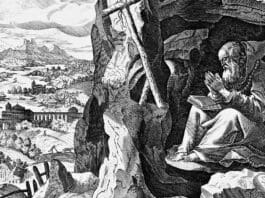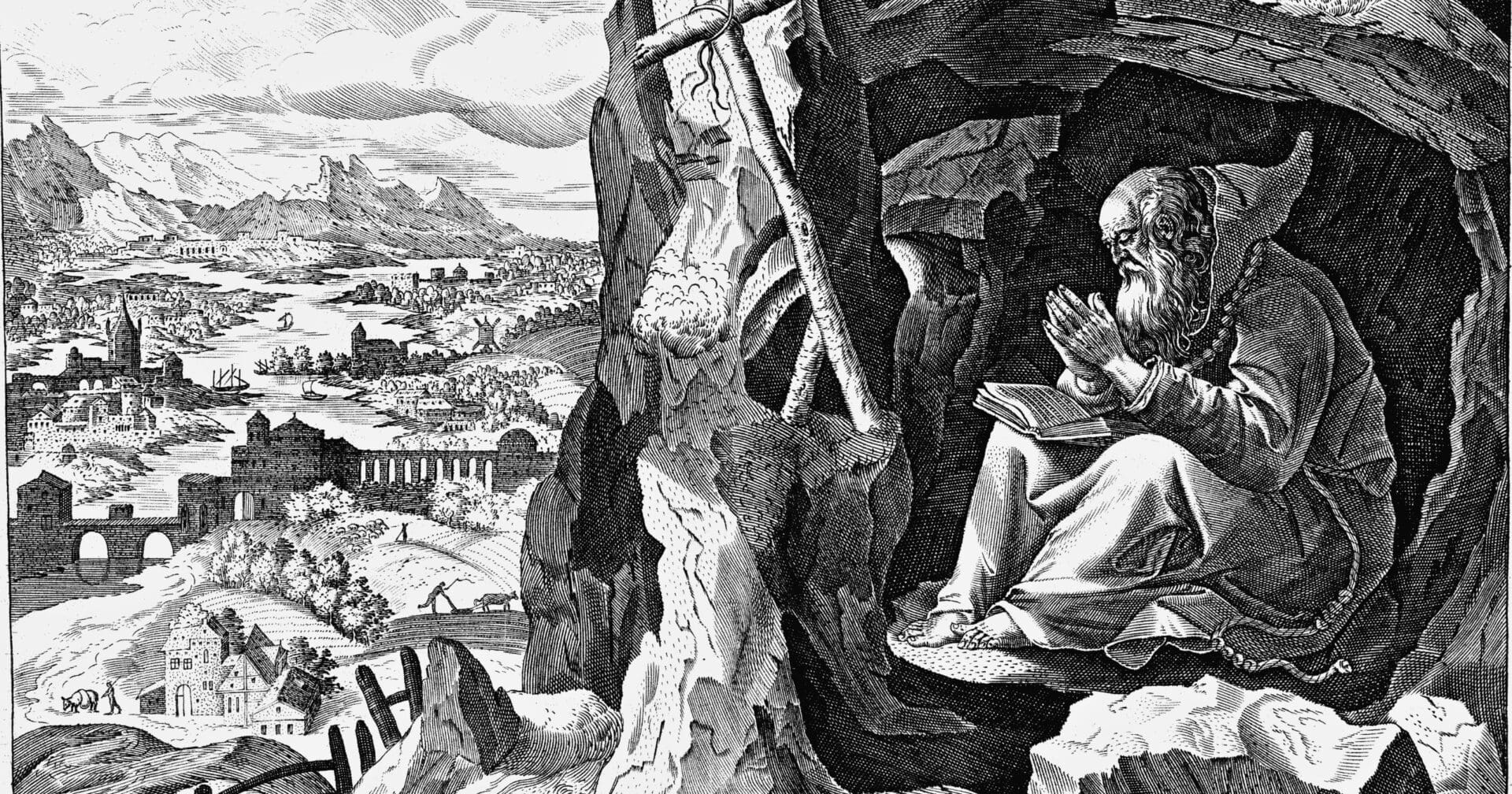
Saint John of Egypt, originally a carpenter in Lycopolis (now Assiut, Egypt), felt a divine pull towards a life of solitude. He spent his early years crafting wood under his father’s guidance but soon sought a deeper connection with God, leading him to abandon worldly life for the desert’s isolation.
Mentored for a decade by a venerable hermit, whom he revered as his “spiritual father,” John was imbued with the essence of sanctity. Following his mentor’s death, John’s quest for spiritual depth led him through various monasteries, eager to understand the monastic ways of prayer and existence.
Ultimately, John settled in a secluded cave, ingeniously partitioned into areas for living, working, and prayer. Here, he enclosed himself, only accessible via a solitary window, through which he shared his insights with those who sought his counsel, attracting even Emperor Theodosius I’s attention for guidance.
The local community supported him with food and essentials, drawn by his wisdom and holiness. His reputation as a sage attracted disciples, prompting the construction of a hospice nearby to accommodate the influx of seekers.
Saints such as Augustine and Jerome acknowledged John’s sanctity, marveling at his prophetic abilities and profound insight into the human soul. His healing touch, through the anointment with blessed oil, brought physical relief to many.
Despite his renown, John’s life was marked by asceticism and humility. He fasted until sunset, subsisting on dried fruits and vegetables, shunning meat and warm meals, in a continual quest for spiritual purity. John passed away in 394 at the age of ninety, having devoted his final days entirely to divine communion, departing this world in a posture of prayer.
Photo credit: Public Domain via Wikimedia Commons
The post Saint John of Egypt appeared first on uCatholic.
Daily Reading
Memorial of Saints Joachim and Anne, Parents of the Blessed Virgin Mary
Readings for the Memorial of Saints Joachim and Anne, parents of the Blessed Virgin Mary Reading 1 JER 3:14-17 Return, rebellious children, says the LORD, for I am your Master;…
Daily Meditation
How to Be Good Soil
Click here for daily readings Jesus is the divine Sower who sows the seed of his word in the community of followers that he calls apart from the world. The…




